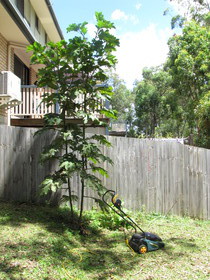As is becoming widely covered, the GCC Steering Committee and the FSF have approved the use of C++ in the GCC codebase. This is not a particularly sudden decision… I originally saw this proposed by Ian Lance Taylor on his blog a couple of years ago. He also has some good slides about how using C++ would be benificial. There was a gcc-in-c++ branch that corrected incompatibilities flagged by -Wc++-compat, but I think this is mostly merged and there is now an experimental --enable-build-with-cxx configure flag. So I think that this decision comes at no real surprise to anyone involved.
I think this is a great idea! Why? Because if the compiler is written in C++, then the compiler developers have more motivation to make C++ compilation faster. This is good for me as C++ is my primary choice for a writing in a compiled programming language. So this is a win for me.
Is it a win for GCC? I know some people (especially Linus Torvalds) think using C++ for anything is a major disaster. In fact, despite being a C++ proponent, I tend to agree… 99% of people who propose the usage of C++ for something are wrong. Many of the complexities in C++ have no place in most projects and too many C++ programmers feel the need to use the entire C++ toolset. Let be honest, the curiously recurring template pattern and template metaprogramming have no real place anywhere but in academia[1]. But (single) inheritance and the STL do provide what I have seen people try to replicate in C many times. Using C++ as a C with classes is not really that different from C but it can be much simpler to write.
There are some obvious cases where changing to C++ in the GCC codebase would be of great benefit. Take a look in gcc/vec.h in the gcc source.
/* The macros here implement a set of templated vector types and
associated interfaces. These templates are implemented with
macros, as we're not in C++ land. The interface functions are
typesafe and use static inline functions, sometimes backed by
out-of-line generic functions. ...
That is screaming out to be replaced by a std::vector. There are other examples where simple inheritance is mimicked using a slew of (un)defines and switch statements. Some of these are so complex, I wonder whether there will be any performance loss due to the introduction of virtual function calls. Certainly, it will be a win in terms of maintainability.
[1] Although in combination you get the expression template paradigm, which allows you to build a really nice numeric vector class that unrolls all loops at compile time and does not suffer from virtual function overhead, making it as fast as manually programming the vector arithmetic in C but much more convenient to use. Then you go back to using std::valarray which is close enough…

